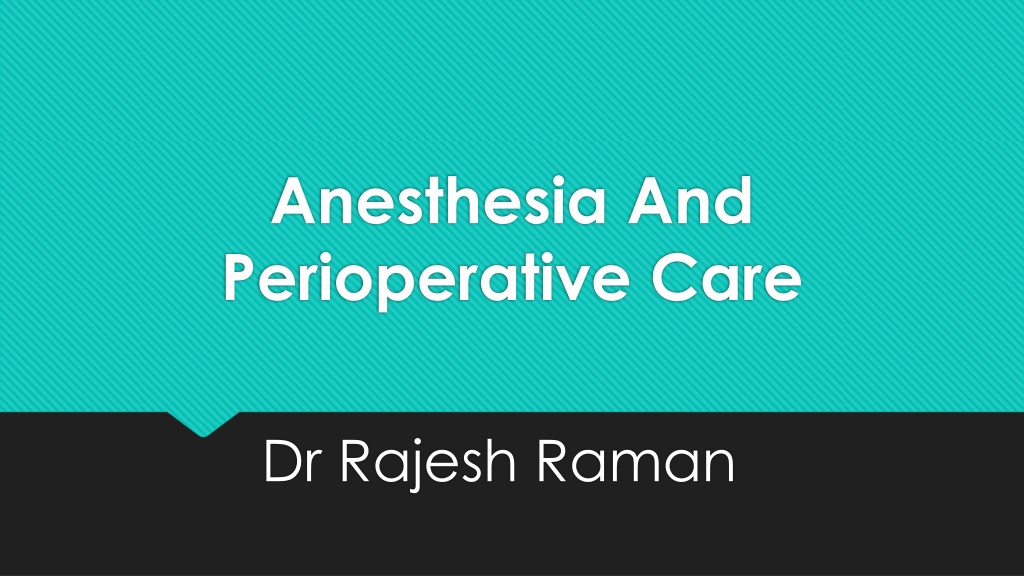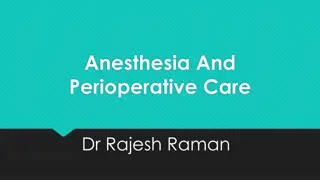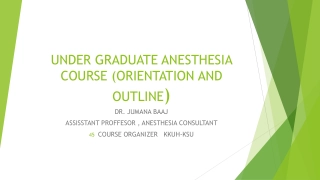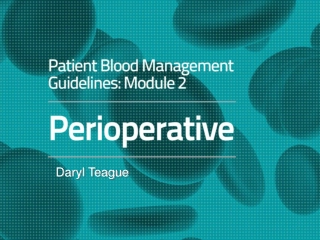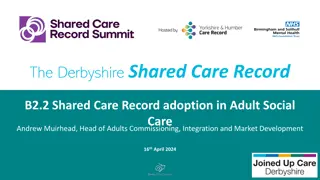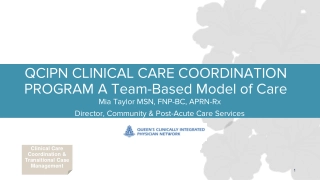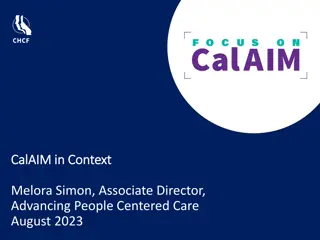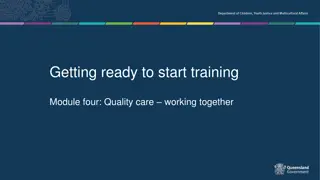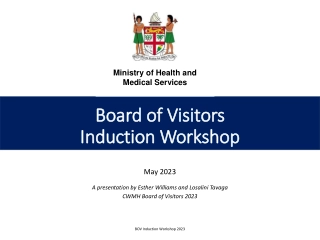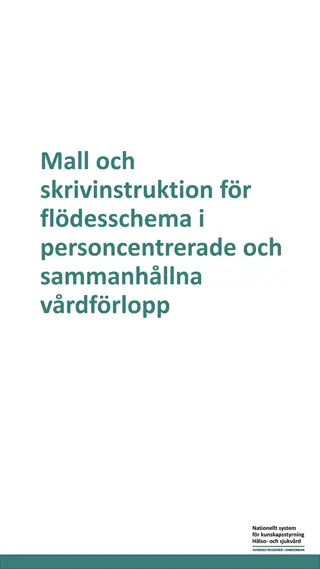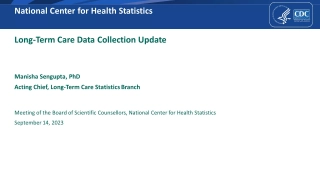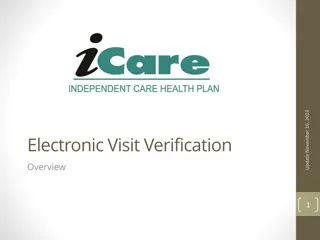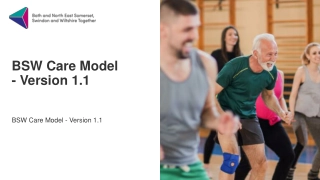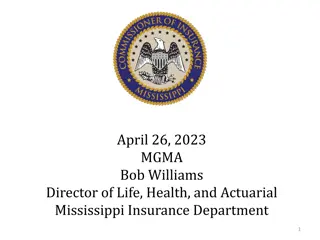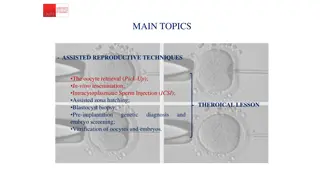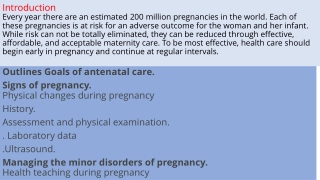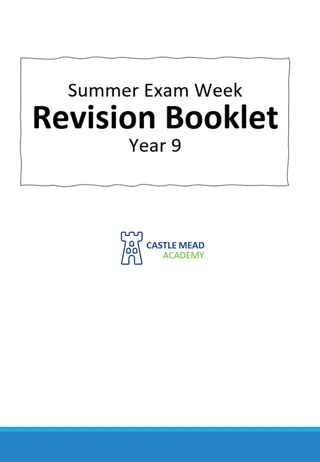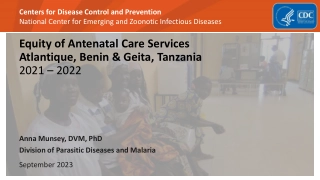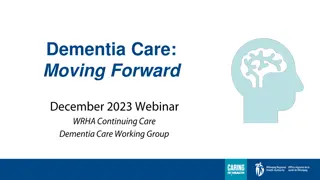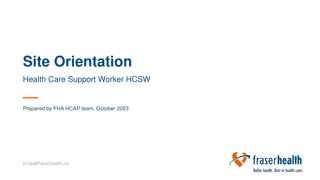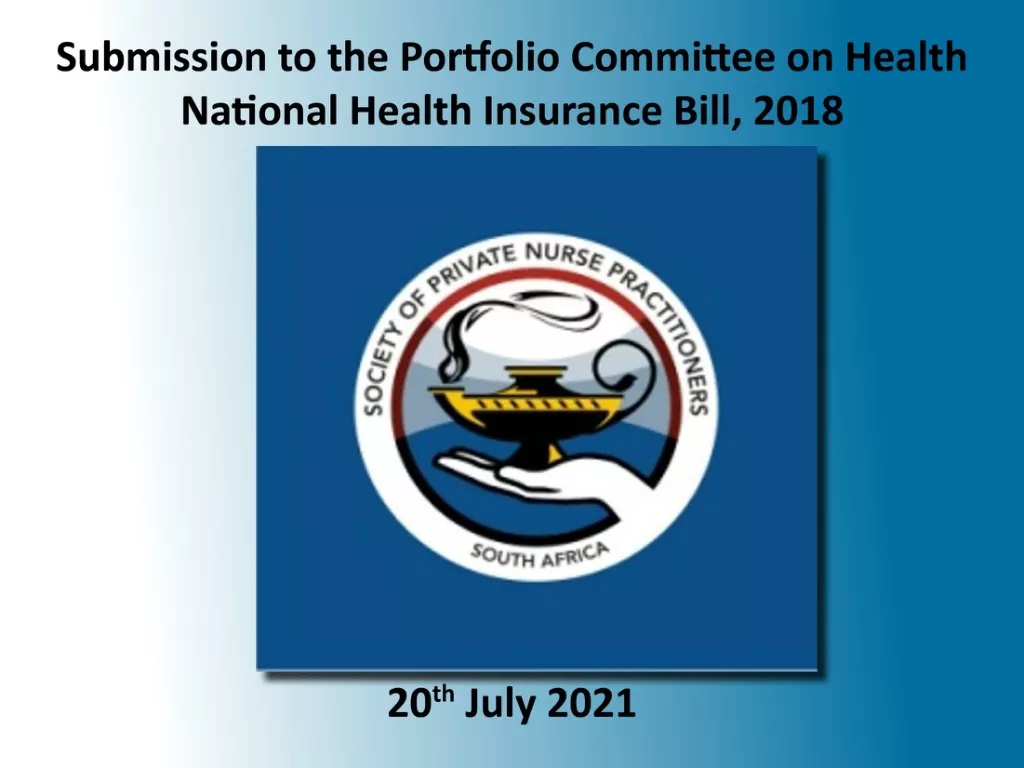Anesthesia and Perioperative Care - Comprehensive Guide by Dr. Rajesh Raman
This detailed guide by Dr. Rajesh Raman covers various aspects of anesthesia and perioperative care, including preoperative assessment and optimization, intraoperative care, postoperative care, perioperative risk assessment, risk due to surgery, medication management, and routine investigations for different patient categories. It highlights the importance of thorough pre-operative checkups, risk assessments, and medication adjustments for a smooth surgical experience.
Download Presentation
Please find below an Image/Link to download the presentation.
The content on the website is provided AS IS for your information and personal use only. It may not be sold, licensed, or shared on other websites without obtaining consent from the author. Download presentation by click this link. If you encounter any issues during the download, it is possible that the publisher has removed the file from their server.
Uploaded on Apr 16, 2024 | 1 Views
Presentation Transcript
Anesthesia And Perioperative Care Dr Rajesh Raman
Anesthesia Preoperative assessment and optimization Intraoperative care Postoperative care
Preoperative Assessment & Optimization
Pre-operative checkup Advantages: Goals: cancellations on day of surgery tests hospital stay and costs anxiety Better counselling Optimization of surgical & co-morbid conditions Detection of diseases Perioperative risk estimation Consent & counselling
Risk Scores: Revised Cardiac Risk Index RCRI Score Risk of major cardiac events* Components Points Assigned 1 0 0.4% High-risk surgery (intraperitoneal, intrathoracic, or suprainguinal vascular procedure) 1 0.9% 2 2.4% 3 *MI, cardiac death, pulmonary edema, VF, CHB 5.4% Ischemic heart disease 1 1 1 1 1 History of congestive heart failure History of cerebrovascular disease ASA Physical Status Diabetes mellitus requiring insulin Creatinine > 2.0 mg/dL
Routine investigations For ASA I & II patients Renal fn. test Chest X- ray X Electrolytes, GB, Coag. X Risk of Surgery CBC LFT ECG Low >45 Y X X Intermediate X >50 Y X >45 Y High >50 Y X >45 Y For ASA III: investigate according to the comorbid disease Blood Ix valid for 2 months, CXR & ECG valid for 1 year- if no change in clinical condition
Medication Management Cardiovascular drugs: All drugs are continued till morning of surgery. Exceptions: ACE inhibitors/ARB if big fluid shifts are anticipated Don t start Beta blockers within 1-2 days before surgery. Respiratory, psychiatry, anti-epileptic: continue Oral antidiabetic: stop metformin 1 day before major Sx. Other: give till night, omit morning dose. Insulins: give 2/3 of night dose, omit morning dose Steroids: >10mg/day prednisolone equivalent within 3 months: give stress dose of hydrocortisone 50-100 mg before surgery
Preoperative advice NPO: 2 hours for clear fluids, at least 6 hours for solid food Drugs: most are to be continued Premedication: Aspiration prophylaxis: only for patients at high risk of aspiration Ranitidine, metoclopramide Sedative medication Midazolam: 1 hour before surgery- in anxious patients Anti-sialagogues: not routinely used Consent and counselling HAVE A PLAN FOR INTRAOPERATIVE AND POSTOPERATIVE MANAGEMENT
General Anesthesia Recovery/emerge nce Induction Maintenance Propofol: most commonly used Ketamine: patients with shock/hypotension Thiopentone: rarely used Additional: fentanyl, muscle relaxant Airway: ETT/SGA Inhalational agents: sevoflurane/isoflurane, N2O MR: vecuronium, atracurium, rocuronium Midazolam Analgesic: additional fentanyl, PCM Optional: dexmedetomidine, propofol infusion Stop inhalational agents Muscle relaxant reversal: Neostigmine + glycopyrrolate
Supraglottic airway devices Advantages Uses Easy to insert For regular GA: generally, 2-4 H Less invasive than ETT Rescue after intubation fails Less depth of anesthesia needed Conduit for intubation Muscle relaxant- lower/omit URTI/Asthma/COPD Less trauma to lower airway Hemodynamic stability Possible to use even if intubation fails
Minimum Mandatory Monitoring Circulation: Respiration & ECG Blood pressure Pulse rate: pulse oximeter EtCO2 graph- not needed for RA SPO2 Chest movement/tid al volume Temperature: if changes in temperature are expected Urine output oxygenation: Optional:
Emergence/Reversal Sedative agents (midazolam, inhalational agents, dexmedetomidine) are stopped at the end of surgery. Their effect ends due to metabolism or redistribution from brain to other tissues. Muscle relaxants- vecuronium, atracurium and rocuronium need reversal using anti-acetylcholinestrases: neostigmine Inhibit acetylcholinestrases- increase the concentration of acetylcholine at neuromuscular junction Neostigmine has chlionergic side-effects: secretions, bronchospasm, bradycardia- requires glycopyrrolate to prevent these.
Delayed recovery after anesthesia Metabolic factors Drugs Complications: Glucose Temp. Na Thyroid Resp. acidosis dose excretion: liver/renal Age Obesity Pregnancy Long duration Stroke/ CNS ischemia Seizures MI Pul. Embolism Fluid overload
Transfer Patient accompanied by an anesthesia care team member Detailed handoff is important to transfer vital preoperative and intraoperative details surgical condition and procedure, comorbid conditions and their management, anesthesia technique used, drugs, fluid intake and output, intraoperative complications, and postoperative instructions
Assessment in PACU Immediately on arrival Airway (patency), breathing (respiratory rate and saturation), circulation (heart rate, blood pressure, ECG), mental status, temperature, nausea, and pain At least every 15 minutes All the above + Urine output Bleeding fluid intake and hydration status Immediately identify common problems in ICU
Hypoxia Upper airway obstruction: Residual effects of sedatives, opioids, muscle relaxants- results in loss of pharyngeal tone, tongue fall. Paradoxical breathing: retraction and collapse of chest wall and excessive abdominal wall movement on inspiration More common in obese, OSA patients Management: Jaw thrust, neck extension, oxygen supplemental Oral/nasal airway CPAP, intubation
Hypoxia Residual neuromuscular block: Contributing factors: hypothermia, electrolyte disorders, hepatic or renal disorders, and drugs like amikacin, lignocaine, calcium channel blockers, and steroids. Diagnosed using neuromuscular monitoring Mx additional doses of anticholinesterases + other Mx of airway obstruction
Hypotension Causes: hypovolemia, bleeding, cardiac dysfunction, vasodilation, tension pneumothorax. Check intraoperative fluid balance, diuretic use, and bleeding Neuraxial techniques (epidural, spinal)can cause hypotension Mx: IV fluids blood vasopressors,
Myocardial Ischemia NSTEMI is more common than STEMI Mostly preceded by periods of tachycardia Mostly asymptomatic: analgesics, sedatives May manifest as hemodynamic instability and ECG changes ECG: ST-T changes, left bundle branch block, ectopic beats, arrhythmias Pulmonary edema, crepitations, systolic muermur of MR Mx: supplemental oxygen, non-enteric coated aspirin (165-325 mg), NTG and morphine For STEMI, PCI is preferred to fibrinolysis
Acute kidney injury Defined as: serum creatinine by 0.3 mg/dl in 48 hours, or >1.5 time baseline OR Urine output <0.5 ml/kg/hr for > 6 hours Pre-renal cause: due to hypovolemia is the most common cause in PACU Post-renal cause due to ureter injury can occur in lower abdominal surgery Patients with pre-existing kidney disease are more prone to AKI
.Acute kidney injury If hypovolemia is suspected to be cause of AKI- administer fluid bolus Diuretics should not be given without excluding hypovolemia Diuretics will worsen hypovolemia and AKI An ultrasound KUB helps in detecting obstructive and intrinsic renal etiologies of AKI
Variable Evaluated Vital Signs Systemic blood pressure and heart rate within 20% of the preanesthetic level Systemic blood pressure and heart rate 20% to 40% of the preanesthetic level Systemic blood pressure and heart rate >40% of the preanesthetic level Activity Level (Able to Ambulate at Preoperative Level) Steady gait without dizziness or meets the preanesthetic level Requires assistance Unable to ambulate Nausea and Vomiting None to minimal Moderate Severe (continues after repeated treatment) Pain Acceptability: Yes No Surgical Bleeding Minimal (does not require dressing change) Moderate (up to two dressing changes required) Severe (more than three dressing changes required) Score 2 1 0 2 1 0 Discharge from PACU 2 1 0 2 1 2 1 0
